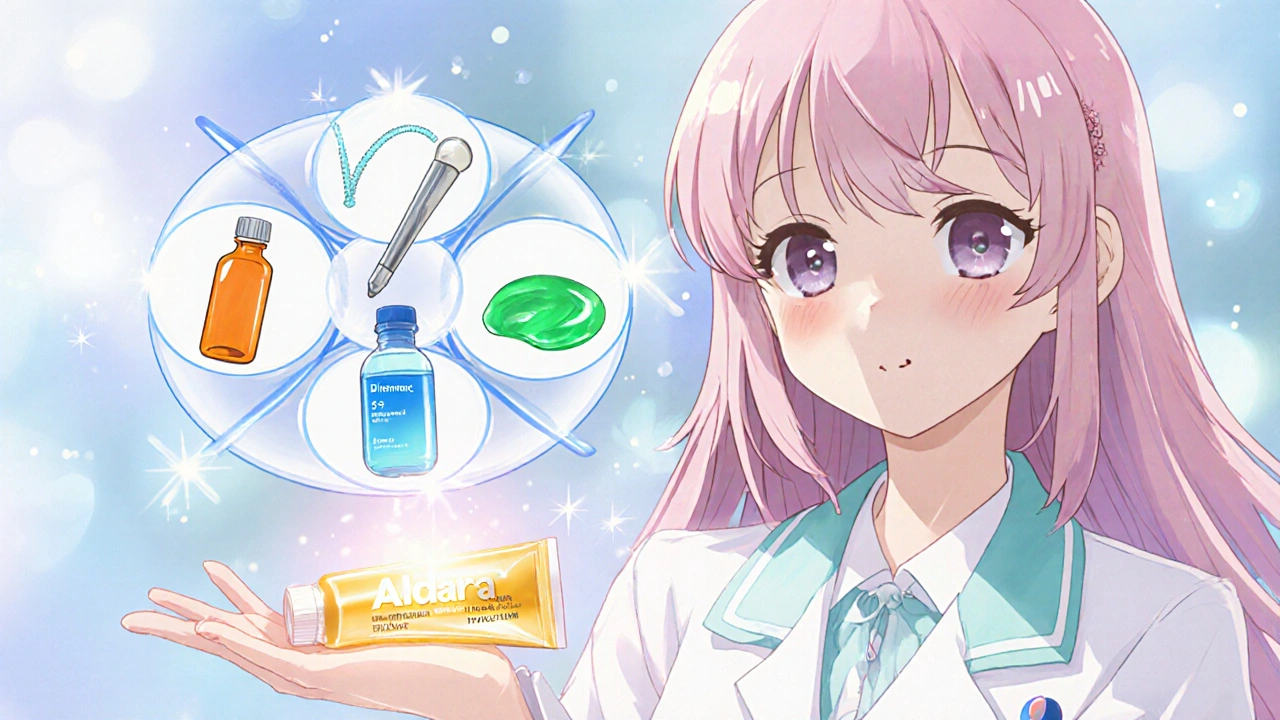Aldara Cream – What It Is and When You Might Need It
When working with Aldara cream, a prescription topical medication that contains imiquimod and treats certain skin lesions. Also known as imiquimod cream, it activates the body’s immune response to target abnormal skin cells, you’re basically using the skin’s own defenses to clear trouble spots. The key player inside is Imiquimod, a synthetic immune‑system agonist that binds to Toll‑like receptor 7 on immune cells. This binding triggers a cascade of cytokines that recruit white blood cells to the application site. The result? A localized, controlled inflammation that forces the unwanted cells to die off. That might sound intense, but the inflammation stays limited to where you apply the cream, keeping systemic side effects low.
One of the most common conditions Aldara tackles is actinic keratosis, a precancerous lesion caused by chronic sun exposure. Left untreated, these scaly patches can evolve into squamous cell carcinoma, so early intervention matters. Aldara’s immune‑boosting action clears the lesion while also treating superficial basal cell carcinoma in some cases. Another frequent use is for genital warts, wart‑type growths caused by human papillomavirus (HPV). By prompting the immune system to recognize and attack the virus‑infected cells, the cream can shrink or eliminate the warts without needing surgical removal. If you’ve heard about other topicals—like Adaferin Gel for acne or Permethrin for lice—those work through very different mechanisms (antibiotic or insecticidal), but they share the idea of a localized treatment that avoids a systemic drug load. Understanding these differences helps you pick the right product for the right skin problem.
What to Expect and How to Use Aldara Effectively
Applying Aldara is straightforward, but a few practical steps maximise results. First, clean the area gently and let it dry—any moisture can dilute the cream’s effect. Apply a thin layer (usually about a pea‑size amount) and spread it evenly; more isn’t better and can increase irritation. Most treatment cycles last three to four weeks, with a break week in between to let the skin recover. Common side effects include redness, itching, and a burning sensation, all signs that the immune response is active. If the reaction feels severe, pause the treatment and consult your prescriber; they may adjust the frequency.
The articles below dive deeper into topics that intersect with Aldara use. You’ll find comparisons of prescription skin creams, safety profiles for immune‑modulating agents, and practical guides on managing side effects. Whether you’re curious about how imiquimod stacks up against other topical therapies or need tips on coping with the inflammation it can cause, the collection offers clear, evidence‑based answers. Let’s explore the range of resources that can help you make the most of Aldara and stay confident about your skin health.

